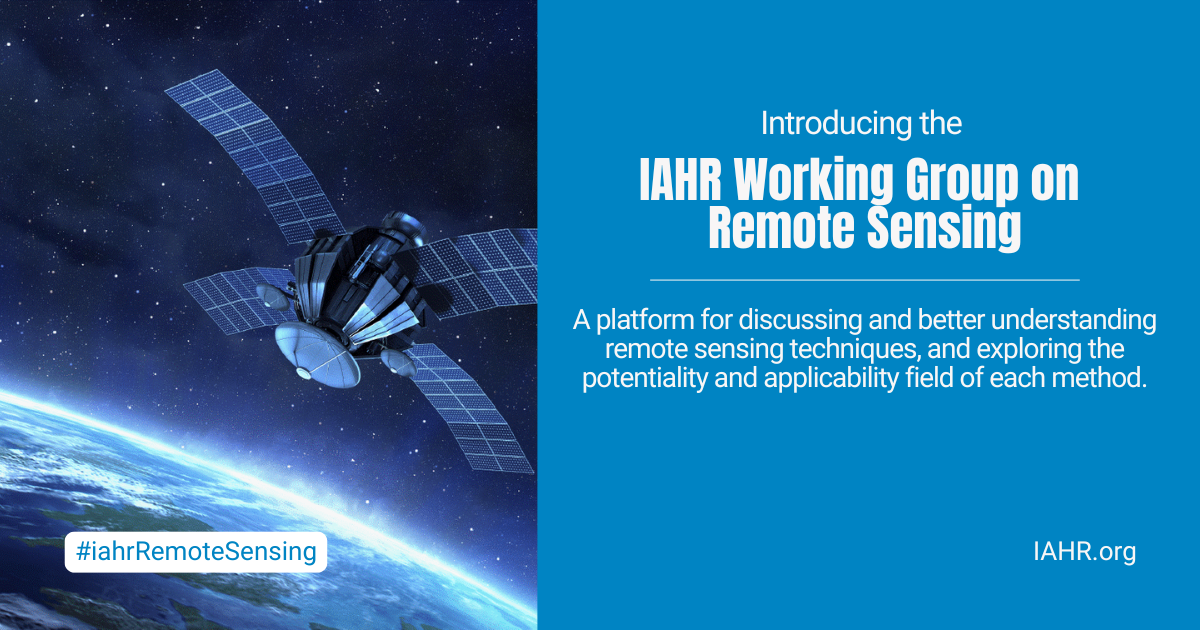Working Group on Remote Sensing
Introduction
Remote sensing (RS) is becoming a paramount tool in analyzing changes of the Earth surface at multiple spatiotemporal scales, eventually providing input data for further modelling and analysis of different scenarios. The rapid advancements in technology have significantly expanded the capabilities of RS, and these technologies are becoming indispensable tools, with numerous industry applications increasingly being adopted as standard practice.
Remote sensing methods comprise a multitude of techniques such as large and miniaturized satellites, airborne sensors, LiDAR, uncrewed vehicles, interferometric synthetic aperture radars, various cameras, etc. Data acquired by RS is, from the aspect of the spatial extent, unmatched by any other method and therefore can improve understanding and prediction of environmental processes. RS methods could be used not only directly, but also in combination with other data sources, in a fused/synergistic fashion, sometimes also including land-based sensor networks or even data from dedicated field campaigns (i.e. one source acting not only complementary to the other, but in a way to leverage the information obtained from the other).
Among the IAHR community, several Technical Committees (e.g., Experimental Methods and Instrumentation, Fluvial Hydraulics, Coastal and Maritime Hydraulics, Hydroinformatics) and members are working with remote sensing methods on a daily basis, mostly by applying different types of RS methods. However, a common understanding of the potential and limitations of each is still limited also because of the lack of a common entry point. Key strengths and weaknesses can be identified only if they are approached from interdisciplinary and transdisciplinary points of view, unravelling the overlapping knowledge gap.
Aims and scope
The IAHR Working Group on Remote Sensing aims to create a platform for discussing and better understanding RS techniques, and exploring the potentiality of each method and the field of application.
Links between scientists, industry, practitioners, and policymakers will be strengthened by leveraging multiple events such as online seminars and workshops, international/regional remote sensing-oriented sessions at congresses, establishment of data-sharing platforms to support global-scale research on river sediment and its associated ecological and environmental issues
Euro-Mediterranean Center on Climate Change (CMCC Foundation) - Division on Soil and Water Systems (SOWAS)
Italy
Addis Ababa University, Institute of Geophysics Space Science and Astronomy
Ethiopia
Coming Activities
Special Session “Earth Observation to Monitor Land and Water Ecosystems” at the 41st IAHR World Congress, Singapore
Planned Activities
Workshops and Master Classes on Remote sensing methods organized as pre-events of Regional and World congresses, as well as Thematic Congresses (e.g., River Flow)
Special sessions at Regional and World congresses
Regular webinars given by invited lecturers and broadcast to the public for free, targeting young professionals
Collaboration with YPN and EPD in YP events (e.g., YP Congress)
Data sharing platform to support global-scale research on river sediment and its associated ecological and environmental issues
Special issues on the topic of Remote Sensing in leading international journals (preferably targeting IAHR journals)
Special Issue of Hydrolink on Remote Sensing in water resources

